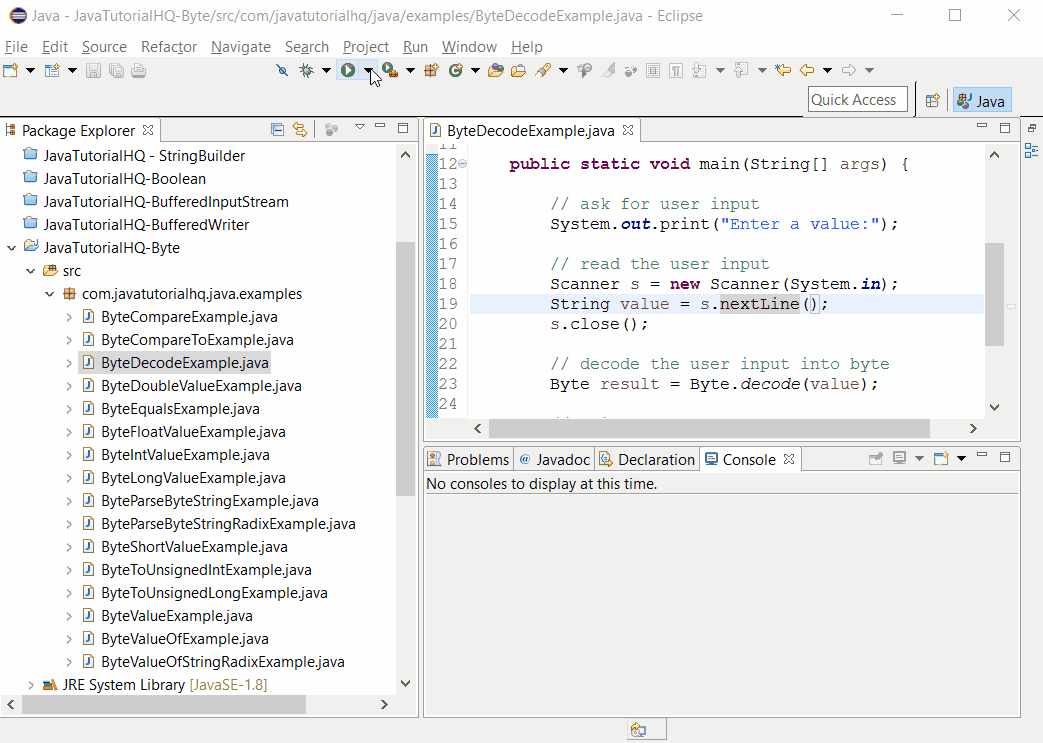java.lang.Byte decode(String nm)
Description
DecodableString:
Signopt DecimalNumeral
Signopt 0x HexDigits
Signopt 0X HexDigits
Signopt # HexDigits
Signopt 0 OctalDigits
Sign:
–
+
DecimalNumeral, HexDigits, and OctalDigits are as defined in section 3.10.1 of The Java™ Language Specification, except that underscores are not accepted between digits.
The sequence of characters following an optional sign and/or radix specifier (“0x”, “0X”, “#”, or leading zero) is parsed as by the Byte.parseByte method with the indicated radix (10, 16, or 8). This sequence of characters must represent a positive value or a NumberFormatException will be thrown. The result is negated if first character of the specified String is the minus sign. No whitespace characters are permitted in the String.
Important Notes:
- The method
decode(String nm)throws a NumberFormatException, if the String does not contain a parsable byte.
Method Syntax
public static Byte decode(String nm)
throws NumberFormatException
Method Argument
| Data Type | Parameter | Description |
|---|---|---|
| String | nm | the String to decode. |
Method Returns
The decode(String nm) method of Byte class returns a Byte object holding the byte value represented by nm.
Compatibility
Requires Java 1.1 and up
Java Byte decode(String nm) Example
Below is a simple java example on the usage of decode(String nm) method of Byte class.
package com.javatutorialhq.java.examples;
import java.util.Scanner;
/*
* This example source code demonstrates the use of
* decode(String nm) method of Byte class.
*/
public class ByteDecodeExample {
public static void main(String[] args) {
// ask for user input
System.out.print("Enter a value:");
// read the user input
Scanner s = new Scanner(System.in);
String value = s.nextLine();
s.close();
// decode the user input into byte
Byte result = Byte.decode(value);
// print the result
System.out.print("Decoded value is " + result);
}
}
Basically on the above example, users were asked to enter a value to be decoded. The decoded value were displayed on the console.
Sample Output
Below is the sample output when you run the above example.

